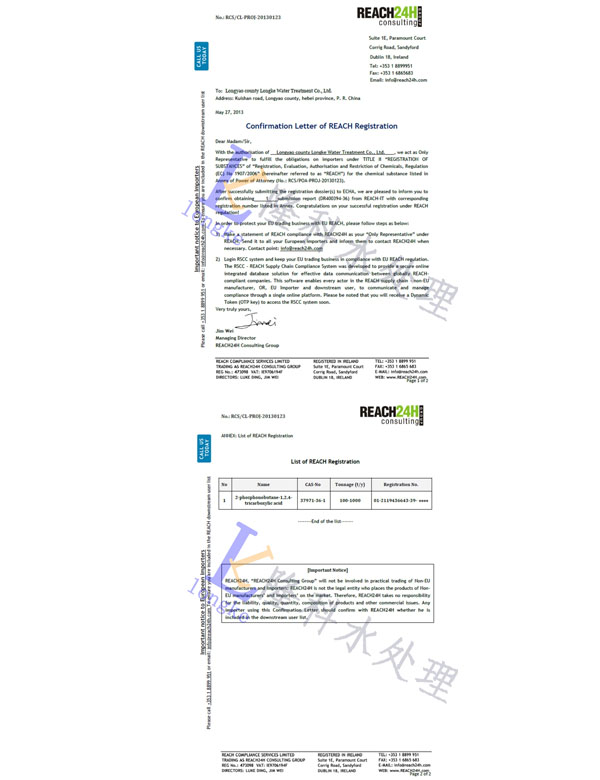flocculants used in water treatment
Flocculants Used in Water Treatment
Water treatment is an essential process that ensures clean and safe water supply for drinking, industrial, and agricultural purposes. One of the most critical components of this process is the use of flocculants—substances that promote the clumping of particles suspended in water into larger aggregates called flocs. These flocs can then be more easily removed through sedimentation or filtration. The use of flocculants enhances the efficiency of water treatment processes, making it easier to purify the water and meet regulatory standards for various uses.
Flocculants can be broadly categorized into two types organic and inorganic. Organic flocculants are typically synthetic polymers, while inorganic flocculants consist mostly of metal salts such as aluminum sulfate and ferric chloride. Each type has its own advantages and suitability depending on the nature of the contaminants present in the water.
Organic Flocculants
Organic flocculants are widely used in water treatment due to their high efficiency and effectiveness in a variety of conditions. These flocculants are typically high molecular weight polymers that work by bridging the gap between suspended particles. Common examples of organic flocculants include polyacrylamides and polydiallyldimethylammonium chloride (PDADMAC). They function by modifying the surface charge of the particles, promoting aggregation at a much lower dosage compared to traditional coagulants. The use of organic flocculants not only improves sedimentation rates but can also reduce the overall cost of water treatment processes.
However, there are some concerns regarding organic flocculants, particularly regarding their biodegradability and potential environmental impact. Some synthetic polymers may persist in the environment and can lead to ecological imbalances. Therefore, the development of more environmentally friendly alternatives, such as bio-based flocculants derived from natural sources, is gaining attention.
Inorganic Flocculants
flocculants used in water treatment

Inorganic flocculants, such as aluminum sulfate (alum) and ferric chloride, have been used for decades in water treatment applications. These salts are effective in neutralizing negative charges on suspended particles, allowing them to clump together and settle more easily. Inorganic flocculants are generally inexpensive and widely available, making them a popular choice for water treatment facilities around the world.
Despite their effectiveness, inorganic flocculants can also have drawbacks. The use of aluminum salts has raised concerns related to health risks, including potential links to neurodegenerative diseases such as Alzheimer's. This has spurred ongoing research into safer alternatives. Moreover, the residual aluminum and other metal salts in treated water can lead to aesthetic issues and might require additional treatment steps.
Applications and Future Directions
Flocculants play a vital role in various applications beyond conventional water treatment. They are used in wastewater treatment, mining operations, and even in food processing. The search for more specialized and eco-friendly flocculants is driving innovation in this field. Natural polymeric flocculants, derived from sources such as chitosan or starch, are being explored for their biodegradable properties and lower toxicity.
Additionally, advancements in technology are leading to the development of smart flocculants that change properties in response to environmental conditions, thus enhancing their effectiveness in diverse treatment scenarios.
In conclusion, flocculants are a pivotal element in water treatment processes, helping improve the quality of water by efficiently removing suspended particles. As the industry moves towards more sustainable practices, ongoing research and development are critical to identify safer alternatives and optimize existing methods. By ensuring the availability of clean water through effective treatment, we can support public health and environmental stewardship for generations to come.
-
lk-319-special-scale-and-corrosion-inhibitor-for-steel-plants-advanced-solutions-for-industrial-water-systemsNewsAug.22,2025
-
flocculant-water-treatment-essential-chemical-solutions-for-purification-processesNewsAug.22,2025
-
isothiazolinones-versatile-microbial-control-agents-for-industrial-and-consumer-applicationsNewsAug.22,2025
-
scale-inhibitor-key-solutions-for-water-system-scale-preventionNewsAug.22,2025
-
organophosphonates-versatile-scale-inhibitors-for-industrial-water-systemsNewsAug.22,2025
-
scale-and-corrosion-inhibitor-essential-chemical-solutions-for-water-system-maintenanceNewsAug.22,2025





